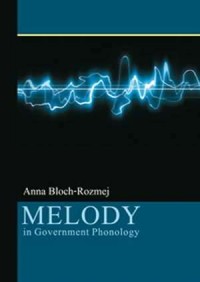
| Dane szczegółowe: | |
| Wydawca: | Katolicki Uniwersytet Lubelski, KUL |
| Rok wyd.: | 2008 |
| Ilość stron: | 374 s. |
| Wymiar: | 176x250 mm |
| EAN: | 9788373637436 |
| ISBN: | 978-83-7363-743-6 |
| Data: | 2008-11-18 |
Opis książki:
Abbreviations
Preface
I. Theoretical preliminaries
1. Introduction 2. Representation and phonological processing
3. Syllabic structure, licensing and government
4. Empty positions
5. Melody
5.1. Phonological primitives: a historical perspective
5.2. Elements
6. Concluding remarks
II. Models of segmental representation
1. Introduction
2. The nature of phonological primes
2.1. Definition and identity
2.2. Autonomy
3. Intra-segmental structure
3.1. Dominance: heads and operators
3.2. Elements: theory-external evidence
3.3. Combinability constraints
3.3.1. Tier Conflation
3.3.2. Charm
3.3.3. Licensing constraints
3.3.4. Alignment and bridging
3.4. Theoretical dinosaurs
3.4.1. Introduction
3.4.2. Representing coronality
3.4.3. The neutral element
3.4.4. The ATR contrasts
3.5. Endangered species
3.5.1. Sides of one coin
3.5.2. The Noise Parameter
3.5.3. Language-specific interpretations of headedness
3.5.3.1. Stricture
3.5.3.2. Voicing
3.6. Redefining the universal inventory: the functional element
4. Segment architecture
4.1. Melodic geometry
4.2. Contour structures revisited
4.3. Element activation
5. Melody-prosody interaction
5.1. Licence to attach: the realisation of phonological primes
5.2. Coda Mirror
6. Segmental strength: myth or reality?
6.1. Complexity scales
6.2. Inherent strength of segments
6.3. Melodic strength in the revised theory of elements
7. Conclusion
III. SUBSEGMENTAL STRUCTURE AND PHONOLOGICAL PROCESSING
1. Introduction
2. Affricates and node structure conditions
2.1. Back to Harris (1994a)
2.2. Affrication in German: a case of node fission
2.3. The node ordering dilemma
2.3.1. Affricates: structures and approaches
2.3.2. Node structure and phonological processing
2.4. Nodes, heads and bridges
2.4.1. Hungarian adaffrication and Szigetvari`s Coda Conditions
2.4.2. Inter-element bridges and Hungarian adaffrication
2.5. Concluding remarks
3. Prime status: role and consequences
3.1. Introduction
3.2. Velar plosives in Hutsul and Podillian
3.3. Headless segments in English, Irish and Dutch
3.3.1. Introductory remarks
3.3.2. The structure of schwa: a status-based hypothesis
3.3.3. Schwa in Dutch: facts and accounts
3.4. Conclusion
4. Element spreading effects
4.1. The nature of spreading
4.2. Selective spreading in Turkish
4.3. Segmental opacity
4.3.1. Spreading failure in Turkish
4.3.2. Intra- and inter-constituent structures in Connemara Irish
5. Conclusion
IV. MELODY-PROSODY INTERFACE
1. Vertical and horizontal bonds
2. Floating elements
2.1. Theoretical basics
2.2. Consonant prefixation in Irish
2.3. Floating liquids
2.3.1. The double impact of the floating r
2.3.2. Floating liquids in American English
3. Element extension effects
3.1. Conceptual foreword
3.2. Syllabic consonants in Slavic languages
3.3. The direction of element extension: evidence from Mambila and Chinese
3.4. Nasality extension in languages
4. Prime interpretation domains: concluding observations
5. Long-distance inter-element relations
5.1. Theoretical introduction
5.2. Consonant harmony in the literature
5.3. Nasal consonant harmony in the Bantu languages 5.3.1. NCH as head alignment
5.3.2. Restrictions on nasality expansion
5.3.3. Contour structures and nasality transmission
5.4. Liquid harmony: evidence from Bukusu and Sundanese
5.5. Stricture harmony in Yabem
5.6. Laryngeal harmony in Kera
5.7. No major place harmony at a distance
5.8. Concluding remarks
Conclusion
References
Książka "Melody in Government Phonology" - Anna Bloch-Rozmej - Wydawnictwo Katolicki Uniwersytet Lubelski, KUL. Książka posiada 374 stron i została wydana w 2008 r.

